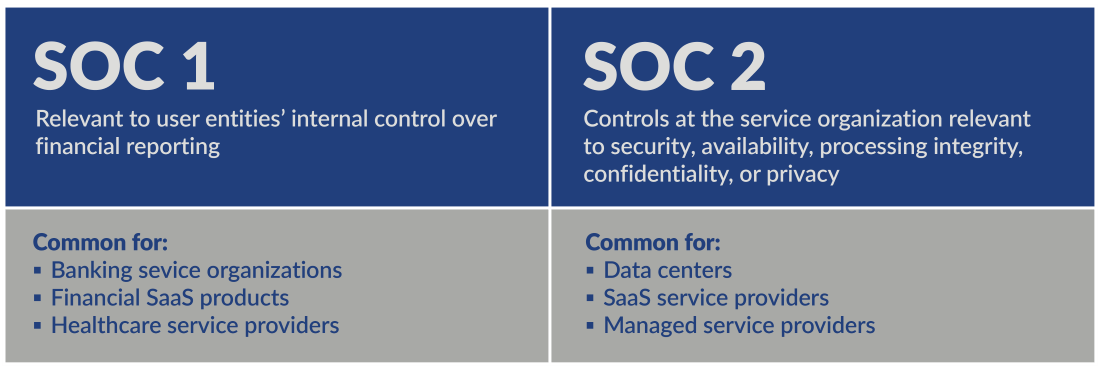For data centers, trust isn’t just a virtue — it’s a growth strategy. Once relegated to the back office, System and Organization Controls (SOC) compliance has emerged as a front-line differentiator. A SOC report is more than a security audit: It’s a signal to clients, investors, and regulators that your operations are disciplined, scalable, and built to last.
In a market marked by exploding AI workloads and relentless cyberthreats, that signal is more valuable than ever. Top data centers turn compliance into a competitive advantage, while those that treat SOC as a checkbox fail to earn customer trust and risk checking out of the market.
What is a SOC report?
A SOC report is a third-party attestation that your internal controls meet a recognized standard. SOC 1 focuses on internal controls at a service organization related to financial reporting. SOC 2 focuses on controls at a service organization related to security, availability, processing integrity, confidentiality, and/or privacy, also known as Trust Service Criteria (TSC). SOC 3 is a public-facing summary of SOC 2.
SOC 2 compliance starts with a readiness assessment. Then you build and document your controls. The end goal is a SOC 2 Type 2 report, where an independent audit firm tests those controls over a period of time. Once validated, they issue your report. The process takes months, but the benefits last much longer.

Which SOC report is best for data centers?
Most data centers pursue the security and availability categories of SOC 2 because that’s what clients want to see. It’s the credential that answers hard questions before they’re even asked.
Internally, the process brings clarity. It forces teams to define roles, tighten controls, and align priorities. Externally, it’s a proof point that shortens sales cycles, supports renewals, and builds stakeholder confidence.
Today’s data center clients aren’t just looking for uptime, they’re looking for alignment. Whether they’re in healthcare, finance, or e-commerce, they need partners who understand their regulatory world. While other compliance frameworks like HIPAA, PCI DSS, and ISO 27001 are also important, SOC 2 hits a unique sweet spot: rigorous enough to matter, broad enough to apply.
Data center compliance is your competitive edge
Before a client asks about your cooling systems or power density, they ask something more fundamental: Can we trust you? For enterprise buyers, a missing SOC 2 report is often a dealbreaker. Without it, you may never make it past procurement.
Whether you’re serving fintech startups or Fortune 500s, the message is the same: Show us how you operate. A SOC report achieves this without forcing your team to answer a security questionnaire for every prospective customer, vendor, or partner.
Data centers that approach SOC compliance with a minimalist mindset — just enough to get the report — are often exposed when clients dig deeper. They’ve technically passed the audit but failed to inspire confidence. These are the providers that get left off shortlists, lose renewals, and fade quietly out of the market.
SOC compliance also strengthens your position across the vendor chain. If you can prove your own controls, you’re in a better position to demand the same from your suppliers. That reduces risk, builds resilience, and sends a clear message: this is a well-run operation.
In a market where speed matters, trust can’t be an afterthought. It must be built in, visible, and authentic. When SOC is treated as a genuine performance benchmark, it opens doors. When it’s treated as paperwork, it closes them.
Key considerations for SOC 2 compliance
1. Start with a readiness assessment
If you’re new to the process, start with a readiness assessment. Map your controls, identify security gaps, and avoid siloed efforts. Your leadership, IT, legal, and operations teams should work together to establish a compliance culture for your entire organization.
2. Ask these compliance questions
When clients review your SOC report, they’re not just scanning for technical jargon. They’re looking for answers to questions that address significant risks that are fundamental to their business and keep them up at night:
- How do you protect data?
- What happens during an outage or breach?
- How do you control access, physically and digitally?
- How do you evaluate and monitor your vendors?
A SOC 2 report answers all of these in a structured, credible way. It gives clients peace of mind, enabling faster decisions, smoother onboarding, and longer relationships.
3. Right-size compliance for your data center
Not every data center needs the same level of coverage. Smaller operators may focus on a few key systems. Larger, multi-site providers often need a broader scope, especially when serving regulated industries.
But the principle is the same: the more clients you serve, the more valuable your SOC report becomes. It scales your credibility. It reduces time spent answering the same questions. And it positions you as a partner, not just a provider.
4. Use SOC as a sales tool
Once your SOC report is in hand, don’t bury it in a folder. Use it. Train your sales team to explain what it means. Reference it in proposals. Highlight it on your website. Mention it in renewal conversations.
For clients, it’s a sign that your standards haven’t slipped. For investors, it signals maturity. For your team, it’s proof that operations and strategy are aligned. But that only works when your report reflects genuine improvements to your controls, not just securing the audit.
Trust is the new infrastructure
In a market where trust drives decisions, SOC compliance is more than a back-office task. It’s a front-line asset. It helps you prove what you already know to be true: Your operations are secure, reliable, and ready to scale.
SOC can be your passport to growth. Or it can be a stamp you barely earned. The difference is in how you approach it.
Trust is the bridge between where you are now and where your business wants to go. SOC compliance builds that bridge. And once it’s built, it carries more than just audits. It carries opportunity — or, for those who cut corners, a warning label.





